石榴籽·同心圆 | 蒙古族:“搏克”,草原狂欢节上的重头戏!
悠扬动听的马头琴声,随风飘动的圣洁哈达,“那达慕”三项正在进行,蒙古族男儿列队上场。
The melodious sound of the horsehead fiddle accompanies the fluttering of holy hadas in the wind as the three sports games of the Nadam Fair are underway. Mongolian men march onto the field in formation.
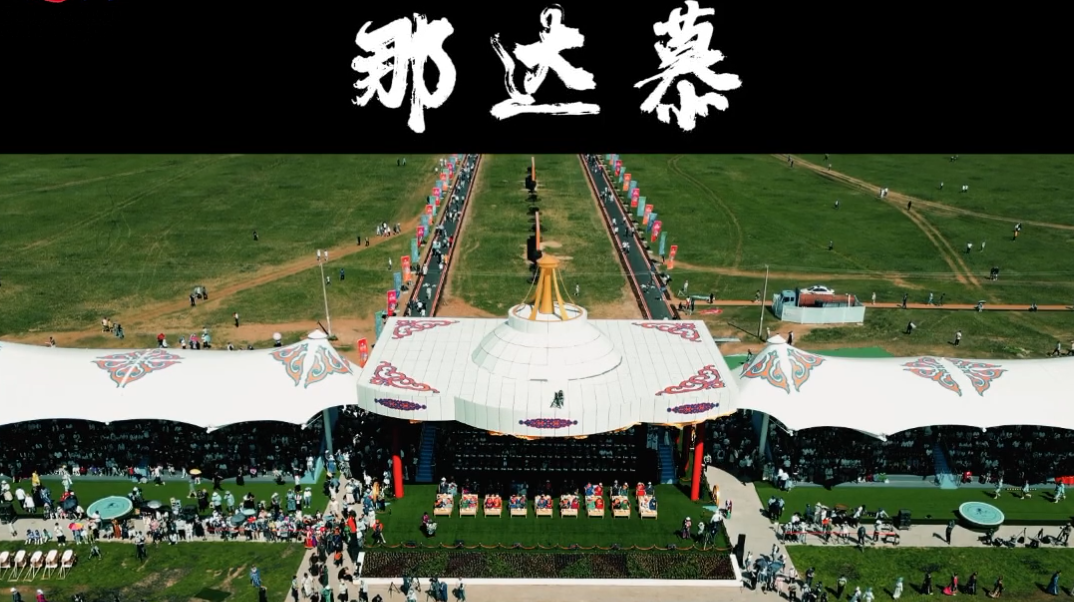
每年农历六月初四开始的“那达慕”,是草原上一年一度的传统体育盛会。
The annual Nadam Fair, which starts on the fourth day of the lunar sixth month, is a traditional sporting extravaganza held on the grasslands.
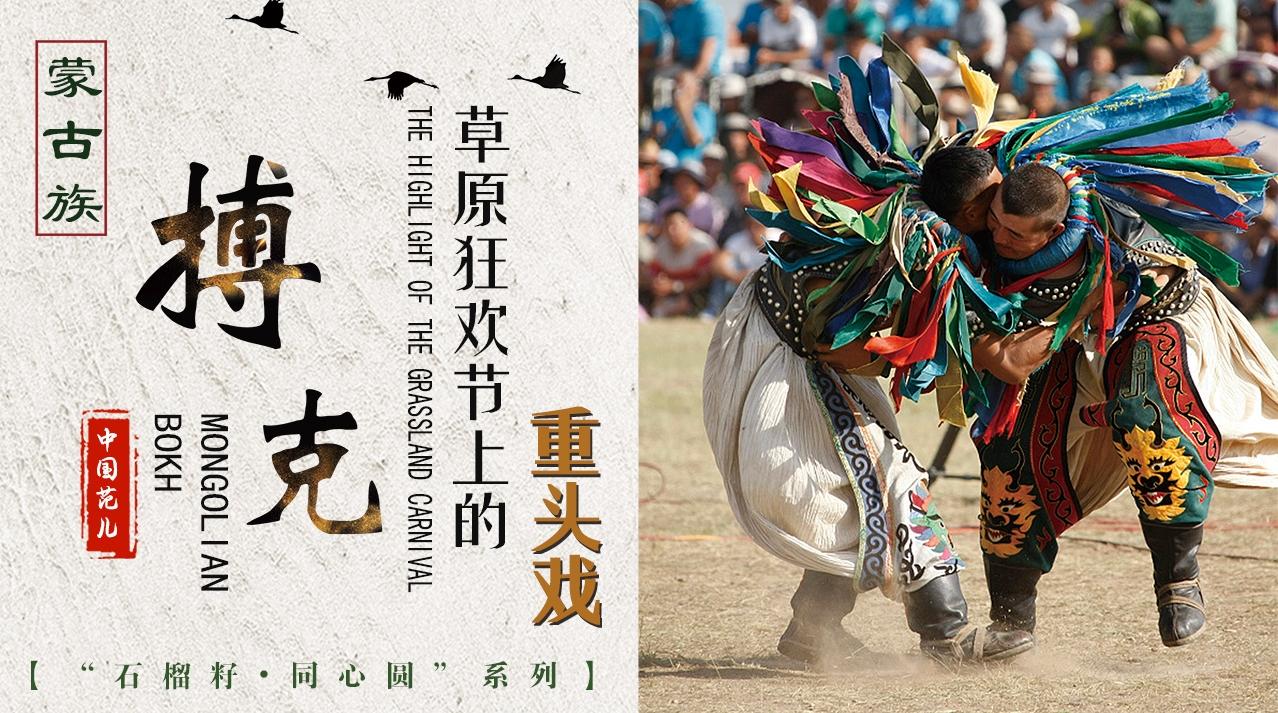
那达慕大会上,你会看到两个身着传统服饰的大汉抱在一起,一番角力后,其中一人突然一个扫腿或是抱摔,下一秒,另一人栽倒在地。胜者会主动将败者拉起,友好地拍拍他的肩膀,这是每一名选手都会遵守的礼仪。这就是蒙古族摔跤比赛,蒙语叫“搏克”,它位于蒙古族三大运动——摔跤、赛马、射箭,之首。
At the Nadam Fair, one can witness the spectacle of two strong men clad in traditional attire embracing each other. After a brief struggle, one of them executes a swift leg sweep or a powerful body slam, causing the other to fall to the ground in the blink of an eye. The victor would graciously extend a hand to help the defeated opponent rise to their feet, while offering a friendly pat on the shoulder. This is a customary etiquette adhered to by every participant. This is the Mongolian wrestling competition, known as “Bokh” in Mongolian. It holds a prominent position among the three manly games of the Mongolian ethnic group, namely wrestling, horse racing, and archery.
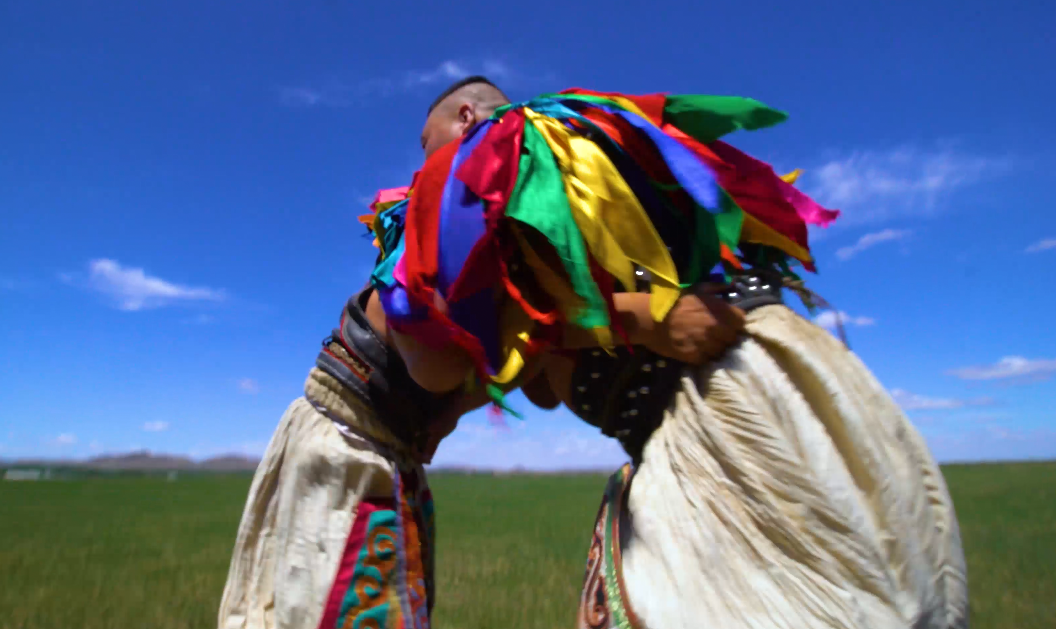
你会发现有的大力士脖子上套着彩色布条的项圈,蒙古语称“将嘎”。这个彩圈可不是每个摔跤手都有的,只有在一定规模的搏克比赛中获得过冠军的选手才有资格佩戴将嘎。彩条越多,表示获得冠军的次数越多。因此,将嘎是蒙古族搏克手极为看重的一件荣誉性的佩饰。
One might notice that some of the wrestlers wear a colorful ribbon necklace, known as “Jangga” in Mongolian. This colorful necklace is not something that every wrestler possesses. Only athletes who have won championships in Bokh competitions of certain scales are eligible to wear it. The more colored ribbons, the greater the number of championships won. Therefore, Jangga is a highly esteemed honorary ornament for Mongolian wrestlers.
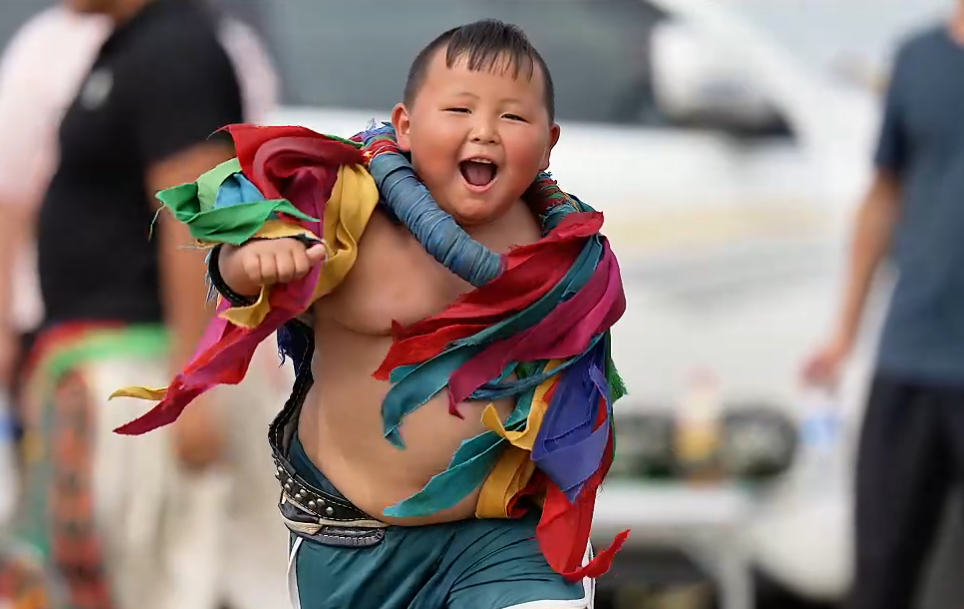
蒙古族的孩子们从小耳濡目染,“搏克”是技艺也是游戏。墩实又可爱的小摔跤手上场,憨厚勇敢的笑容仿佛让人看到了草原上灿烂的阳光。
Children of the Mongolian ethnic group, starting from a young age, are exposed to the art and game of Bokh. These sturdy and adorable young wrestlers take to the stage, their simple yet courageous smiles reminiscent of the radiant sunlight on the grasslands.
摔跤是人类历史上最古老的运动之一,早在两千多年前中国已有摔跤活动。唐朝时摔跤从中国传入日本,如今日本的“相扑”和蒙古族“搏克”有很多相似的地方。
Wrestling is one of the oldest sports in human history, with traces dating back over two thousand years ago in ancient China. During the Tang Dynasty, wrestling was introduced to Japan. Today Japanese sumo and Mongolian Bokh share many similarities.
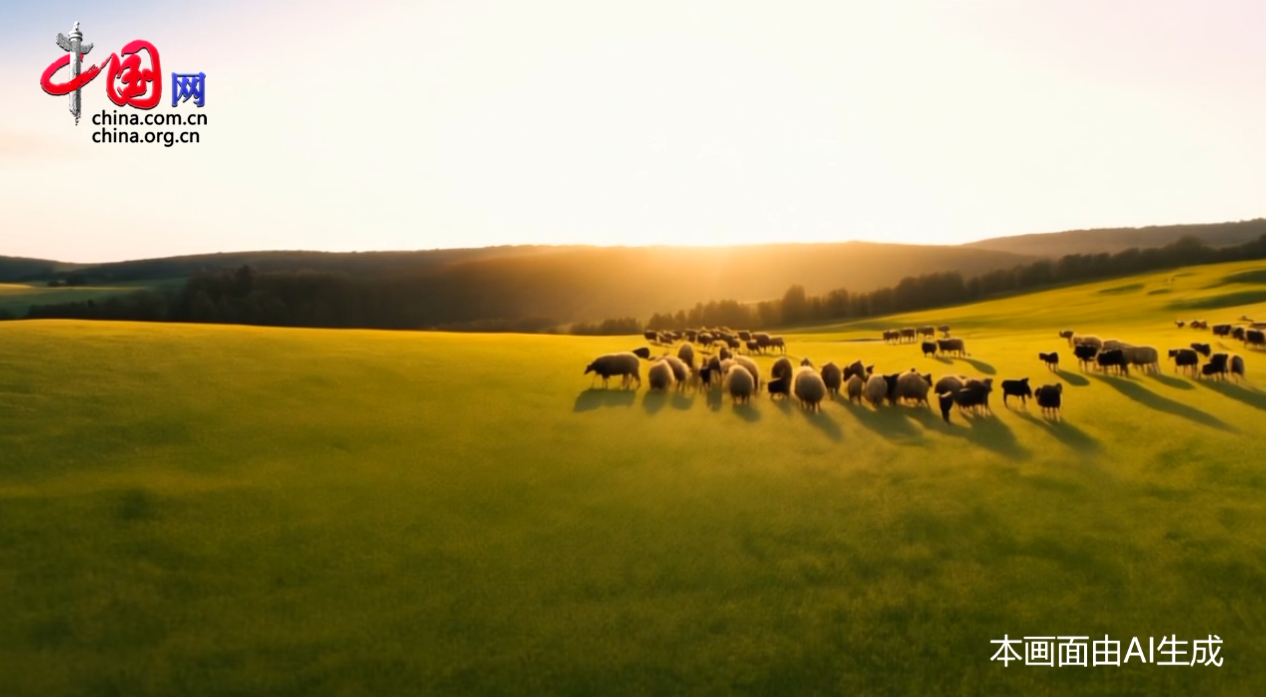
蒙古族搏克,是勇敢和力量的象征。草原人民赋予摔跤的内涵,不仅包括了勇敢与力量,更是不畏强、不凌弱的平等精神。
Mongolian Bokh symbolizes bravery and strength. The people of the grasslands have imbued wrestling with a profound meaning that goes beyond mere courage and prowess. It represents the spirit of equality that is unyielding to the powerful and respectful of the vulnerable.










